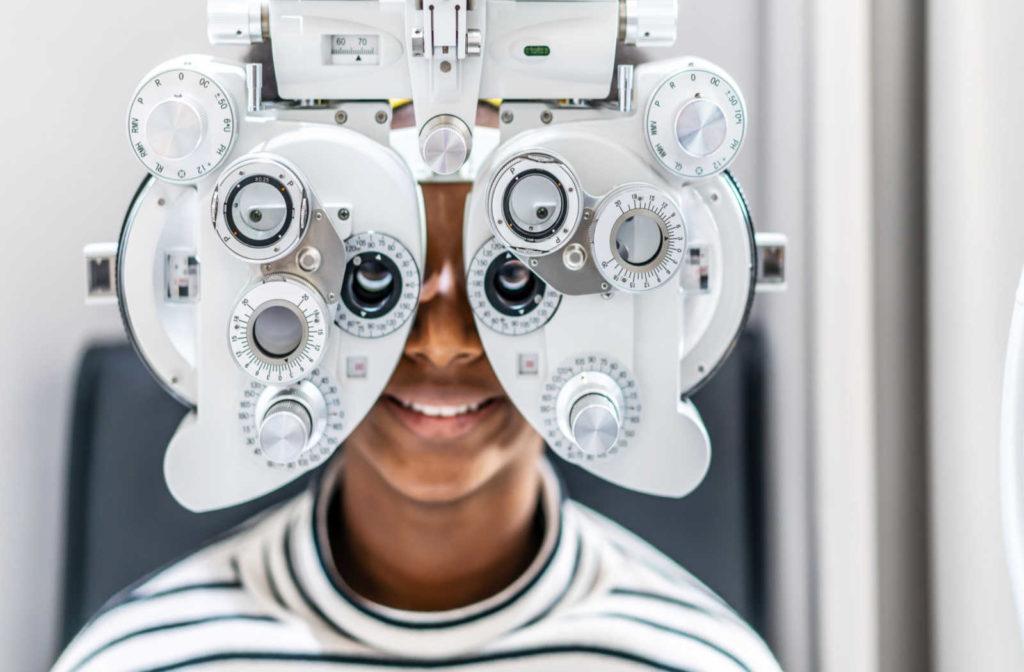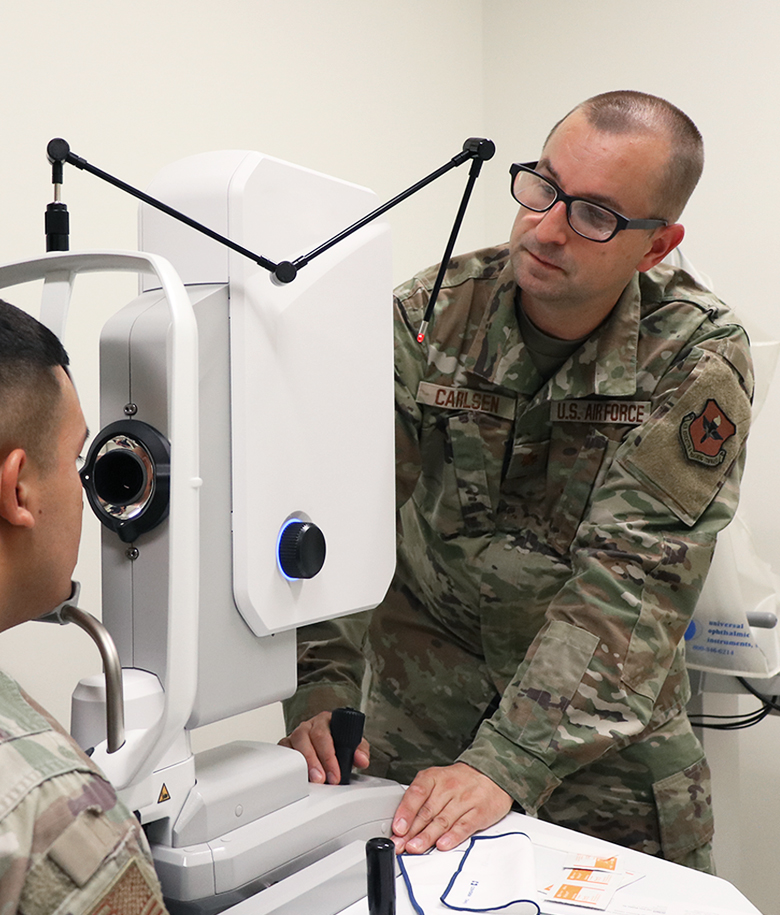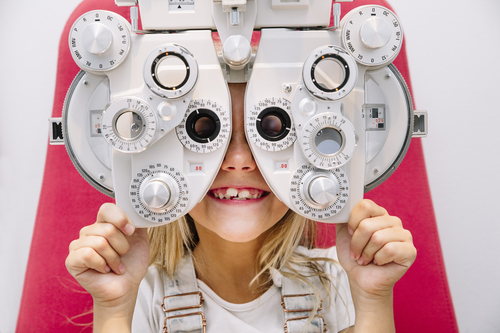Just How an Eye Doctor Can Help Avoid Vision Issues in Chino
Just How an Eye Doctor Can Help Avoid Vision Issues in Chino
Blog Article
Exploring the most up to date Technological Advancements in Optometry and What They Mean for Eye Doctors
From the precision of Optical Comprehensibility Tomography to the nuanced insights provided by AI-driven diagnostic devices, these innovations are setting new requirements in client evaluation and treatment. As these developments permeate the practice, optometrists are encountered with the challenge of welcoming these tools to boost client results.
Innovations in Diagnostic Devices
Advancing the field of optometry, developments in analysis tools have actually revolutionized the way eye care experts evaluate and identify ocular conditions and visual impairments. The past decade has actually observed significant technical improvements, enabling even more thorough and accurate evaluations.
An additional trick development is the introduction of advanced corneal topography systems, which map the surface curvature of the cornea with accuracy. These tools are especially useful for suitable contact lenses and identifying corneal disorders. Digital retinal imaging has actually transformed traditional ophthalmoscopy, supplying comprehensive, panoramic sights of the retina that facilitate complete aesthetic examinations.
The growth of wavefront aberrometry has additionally been essential, enabling the analysis of refractive mistakes with unequaled precision (Eye Doctor Optometrist). This technology aids in customizing restorative lenses and boosting surgical results for refractive surgeries. Collectively, these diagnostic advancements encourage eye doctors to deliver premium person treatment, ensuring early intervention and customized therapy approaches, eventually boosting aesthetic health outcomes
AI in Person Administration
Building on the foundation of advanced diagnostic tools, the consolidation of fabricated intelligence (AI) in patient management stands for a transformative jump for optometry. AI systems are progressively used to enhance efficiency, accuracy, and personalization in patient care. By analyzing vast quantities of data, AI can identify patterns and forecast prospective eye problems, enabling optometrists to customize interventions more properly. This capacity is vital in managing chronic eye diseases such as glaucoma and diabetic person retinopathy, where early detection and continual monitoring are crucial.
Additionally, AI-driven systems help with structured patient interactions and management procedures. Automated scheduling, virtual assessments, and individualized follow-up strategies not only boost person complete satisfaction yet additionally maximize time administration for professionals. These systems can triage clients based on the seriousness of their problems, ensuring that those in essential requirement obtain prompt focus.
Moreover, AI improves decision-making by giving eye doctors with evidence-based referrals and treatment paths. By incorporating information from digital health documents, AI devices use insights that notify professional choices, reducing the threat of mistakes and boosting individual end results. As AI continues to progress, its role in client monitoring will likely broaden, improving the landscape of optometric care.
Breakthroughs in Retinal Imaging
In the world of optometry, retinal imaging has seen amazing technical improvements that are enhancing analysis capacities and patient treatment. Developments such as Optical Comprehensibility Tomography (OCT) and fundus photography have actually changed exactly how eye doctors examine the retina and imagine.
Improved imaging modalities like OCT angiography are additional refining analysis precision. This non-invasive method maps blood circulation in the retina, supplying crucial insights into vascular health without the requirement for dye injections. Additionally, adaptive optics modern technology is being integrated into retinal imaging systems to deal with ocular aberrations, delivering extraordinary picture quality. Such developments help with the recognition of min retinal adjustments that can signify illness progression.
Moreover, developments in artificial intelligence are increasing retinal imaging by allowing computerized evaluation of large datasets. These systems help eye doctors in identifying patterns indicative of pathology, consequently improving analysis precision and effectiveness. Jointly, these technologies are transforming retinal imaging right into a keystone of modern-day eye care, improving end results and dig this increasing restorative possibilities.
Teleoptometry's Growing Duty
Teleoptometry is progressively becoming a vital part of eye treatment, driven by advancements in electronic interaction and analysis tools. As optometry welcomes digital makeover, teleoptometry promotes remote consultations, enabling eye doctors to expand their services beyond typical limits. This is particularly useful in underserved and rural locations where access to specialized eye care is frequently limited. By leveraging high-resolution video conferencing and advanced retinal imaging, optometrists can carry out comprehensive eye examinations from afar, guaranteeing prompt diagnosis and therapy.
The assimilation of artificial intelligence (AI) additional enhances teleoptometry, enabling the evaluation of aesthetic information and assisting in the detection of ocular conditions such as glaucoma and diabetic retinopathy. AI-powered formulas can swiftly analyze complex imaging information, offering eye doctors with beneficial insights that boost scientific decision-making.
In addition, teleoptometry sustains connection of treatment through smooth combination with electronic wellness documents (EHRs), permitting optometrists to preserve extensive patient visit our website histories. This ensures that individuals get individualized and consistent care also when seeking advice from with various practitioners.
Regardless of these advantages, challenges stay, consisting of ensuring information safety and handling patient expectations. However, teleoptometry stands for a significant stride in the direction of even more easily accessible, reliable, and patient-centered eye treatment. As modern technology progresses, its function is positioned to increase further.

Future Patterns in Eye Care
A myriad of cutting-edge trends is readied to improve the future of eye care, driven by technical advancements and the advancing requirements of clients. One considerable pattern is the integration of man-made intelligence (AI) in diagnostics, which guarantees to enhance the accuracy and performance of eye evaluations. AI algorithms can examine large quantities of data from retinal photos, potentially identifying problems like diabetic retinopathy and glaucoma earlier than standard methods.
In addition, tailored medicine is gaining traction in optometry, with hereditary screening notifying customized therapy plans. This approach intends to maximize individual end results by tailoring treatments to private hereditary profiles. Wearable technology, such as clever call lenses, is likewise coming up, supplying real-time tracking of intraocular stress or sugar levels, thus offering constant insights right into ocular and systemic health and wellness.
The fostering of enhanced fact (AR) and digital fact (VIRTUAL REALITY) in training and client education and learning is one more arising pattern. These modern technologies use immersive experiences that can boost understanding and abilities both for optometrists and patients. As these fads evolve, eye doctors must remain abreast of technical innovations to supply cutting-edge care, ensuring improved individual outcomes and contentment in the vibrant landscape of eye care.
Final Thought

Jointly, these analysis innovations equip optometrists to deliver exceptional patient treatment, making sure early treatment and customized treatment approaches, eventually boosting aesthetic health end results.

As these technologies continue to advance, optometrists have to adapt and integrate them right into method, inevitably optimizing process performance and elevating the standard of eye treatment supplied to patients.
Report this page